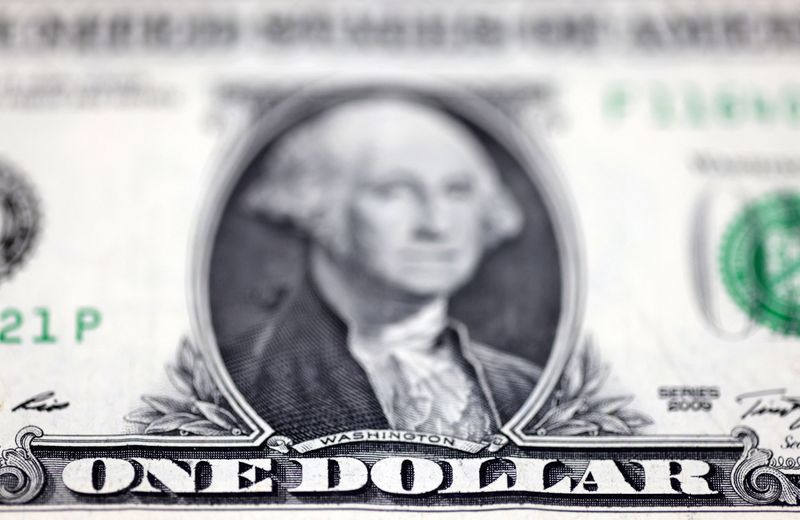Dollar nurses pullback as traders glimpse rate peaks
2022.10.04 20:43
[ad_1]

© Reuters. U.S. Dollar banknote is seen in this illustration taken July 17, 2022. REUTERS/Dado Ruvic/Illustration
By Tom Westbrook
SYDNEY (Reuters) – The dollar nursed its biggest losses for years on Wednesday, after a dovish central bank surprise in Australia had investors wondering whether a peak is in sight for global interest rates.
Overnight the U.S. dollar fell about 1.6% on the euro to test parity at $0.9999 and 1.3% against sterling to $1.1490. The fell 1.3%, its biggest drop since the wild pandemic market of March 2020. It is down more than 4% since hitting a 20-year peak last week.
The and yen were a bit left behind, as was the New Zealand dollar with markets wary the Reserve Bank of New Zealand may also deliver a dovish surprise later in the day. That kept morning moves minor.
On Tuesday, the Reserve Bank of Australia hiked interest rates only 25 basis points (bps) when markets had been priced for a better-than-even chance of 50 bps, triggering a sharp bond rally and a reduction in peak cash-rate expectations.
“It signals a lower peak, coming later,” said Nomura economist Andrew Ticehurst in Sydney. Market pricing reeled back the projected peak in Australia’s cash rate from above 4% to just above 3.5%.
“The A$ did underperform a little, but it’s underperformance was relatively modest given such a massive move in cash-rate thinking,” Ticehurst added, a signal of fragile market sentiment rather than rates likely to be the major driver ahead.
The Aussie crept marginally higher to $0.6512 on Wednesday. The hovered at $0.5736. New Zealand’s interest rate decision is due at 0100 GMT.
The mood has been significantly improved over recent days as Britain has showed some flexibility in spending plans that had spooked bond and currency markets.
Sterling is more than 11% above week-ago record lows, and the bounce has been helpful for the euro. Analysts, however, are cautious about how much has really changed about Britain’s fiscal outlook and how broad Australia’s rates signal really is.
U.S. Federal Reserve Governor Philip Jefferson reiterated overnight that inflation was policymakers top target and that growth would suffer in efforts to bring it down – not brooking any sort of Australia-style slowdown or shift in rate hikes.
U.S. labour data due on Friday will be the next major indicator of the likely trajectory of U.S. rates.
“I think it would be wrong to assume that Australia’s move is a leading indicator for the Fed,” said NatWest Markets’ U.S. rates strategist Jan Nevruzi.
“The ‘peak Fed hawkish’ narrative is one that has seen several false starts – data will tell us if today is another such move.”
========================================================
Currency bid prices at 0007 GMT
Description RIC Last U.S. Close Pct Change YTD Pct High Bid Low Bid
Previous Change
Session
Euro/Dollar
$0.9987 $0.9988 -0.01% -12.15% +0.9987 +0.9980
Dollar/Yen
143.7750 144.0950 -0.16% +0.00% +144.1950 +143.8700
Euro/Yen
143.59 143.91 -0.22% +10.18% +144.0000 +143.5200
Dollar/Swiss
0.9786 0.9797 -0.08% +0.00% +0.9797 +0.9789
Sterling/Dollar
1.1455 1.1477 -0.21% -15.32% +1.1486 +1.1449
Dollar/Canadian
1.3511 1.3508 +0.04% +0.00% +1.3526 +1.3505
Aussie/Dollar
0.6515 0.6502 +0.20% -10.37% +0.6515 +0.6500
NZ
Dollar/Dollar 0.5737 0.5732 +0.07% -16.20% +0.5737 +0.5728
All spots
Tokyo spots
Europe spots
Volatilities
Tokyo Forex market info from BOJ
[ad_2]
Source link








